Fishes
Media

Species Types
Scientific Name
Micropterus dolomieu
Description
The smallmouth bass is a popular gamefish mostly found in cool, clear Ozark streams and large reservoirs in the Ozarks. It's less common in the upper Mississippi River and its principal prairie tributaries that have clear water and permanent flow.
Media
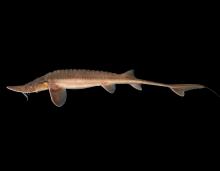
Species Types
Scientific Name
Scaphirhynchus platorynchus
Description
The shovelnose sturgeon's snout is flattened and shovel-shaped; the barbels are fringed, and the bases of the barbels are positioned to form a straight line.
Media

Species Types
Scientific Name
Lepisosteus osseus
Description
The longnose gar has a longer, narrower snout than our other three gars and is the most widely distributed gar in Missouri.
Media

Species Types
Scientific Name
Salmo trutta
Description
Native to Europe, hatchery-raised brown trout are stocked into cold streams and lakes in Missouri. A favorite of anglers, this species can reach 37 inches and 26 pounds.
Media

Species Types
Scientific Name
Sander vitreus
Description
MDC has been stocking walleye, a popular game fish, in lakes and reservoirs including Stockton, Lake of the Ozarks, Bull Shoals, and numerous other reservoirs.
Media
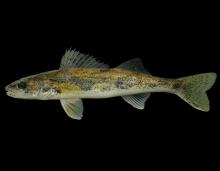
Species Types
Scientific Name
Sander canadensis
Description
The sauger is closely related to the walleye. In Missouri, it's found mostly in the Mississippi and Missouri rivers and suitable tributaries, plus the Eleven Point River. It prefers flowing water and often swift current.
Media
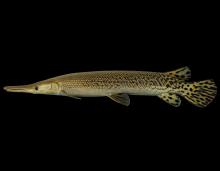
Species Types
Scientific Name
Atractosteus spatula (formerly Lepisosteus spatula)
Description
The alligator gar is Missouri's largest gar and has a distinctively short, broad snout. Populations are declining. This fish once occurred in the Mississippi River at least as far upstream as the mouth of the Illinois River and in major tributaries.
Media
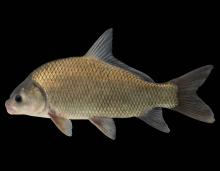
Species Types
Scientific Name
Ictiobus bulbalus
Description
The smallmouth buffalo is nearly as common and widespread in Missouri as the bigmouth buffalo. Identify it by its small, nearly horizontal mouth and the strongly keeled forward part of its back.
Media
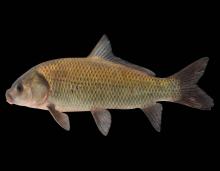
Species Types
Scientific Name
Ictiobus niger
Description
Compared to Missouri’s other buffalofishes, the black buffalo is less abundant and widespread, and of the three, it occurs most often in places with strong currents.
Media
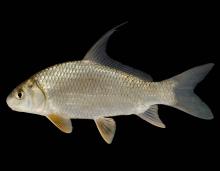
Species Types
Scientific Name
Carpiodes cyprinus
Description
Like our other carpsuckers, the quillback has a deep, rather thick body and a long, sickle-shaped dorsal fin. This silvery, hump-backed fish is widely distributed in Missouri.
See Also


Media

Species Types
Scientific Name
Amphiuma tridactylum
Description
The three-toed amphiuma is an eel-like, completely aquatic salamander. It has very small forelimbs and hind limbs, each with three tiny toes. In Missouri it’s found only in the Bootheel region.
Media

Species Types
Scientific Name
Siren intermedia nettingi
Description
The western lesser siren is an eel-like, aquatic salamander with external gills, small eyes, small forelimbs with four toes, and no hind limbs. In Missouri, it’s found mostly in the Bootheel and northward in counties near the Mississippi River.
About Fishes in Missouri
Missouri has more than 200 kinds of fish, more than are found in most neighboring states. Fishes live in water, breathe with gills, and have fins instead of legs. Most are covered with scales. Most fish in Missouri “look” like fish and could never be confused with anything else. True, lampreys and eels have snakelike bodies — but they also have fins and smooth, slimy skin, which snakes do not.





















